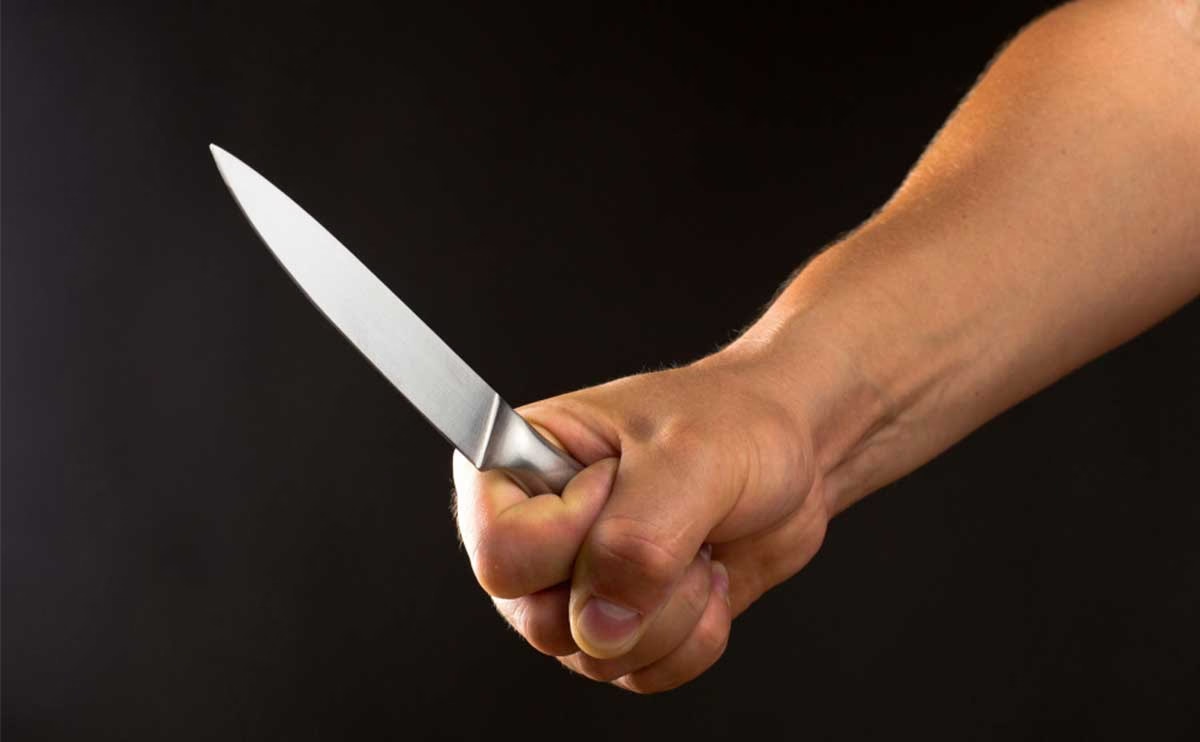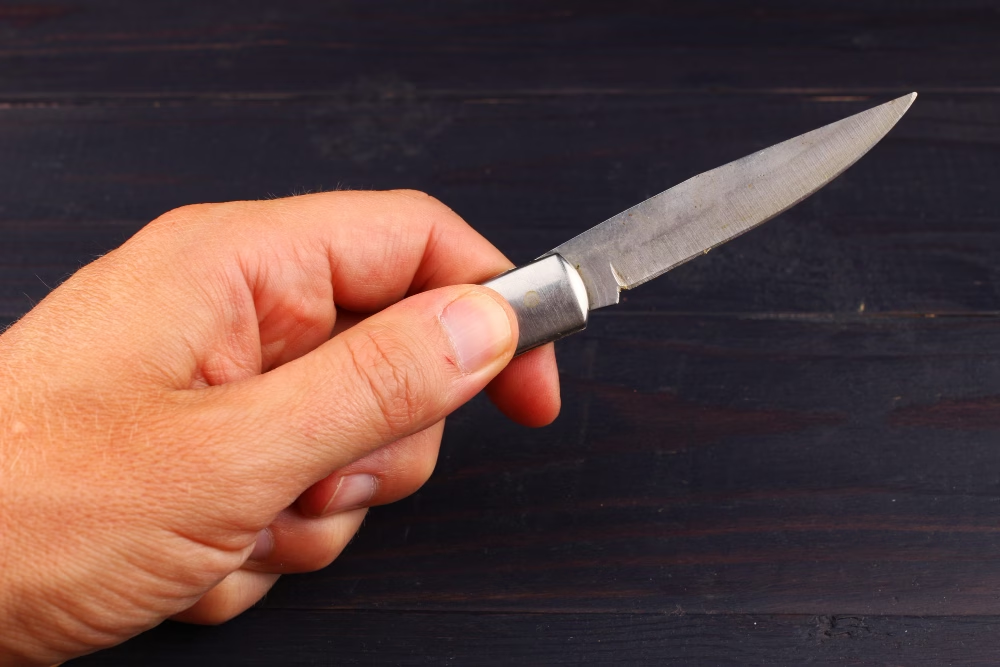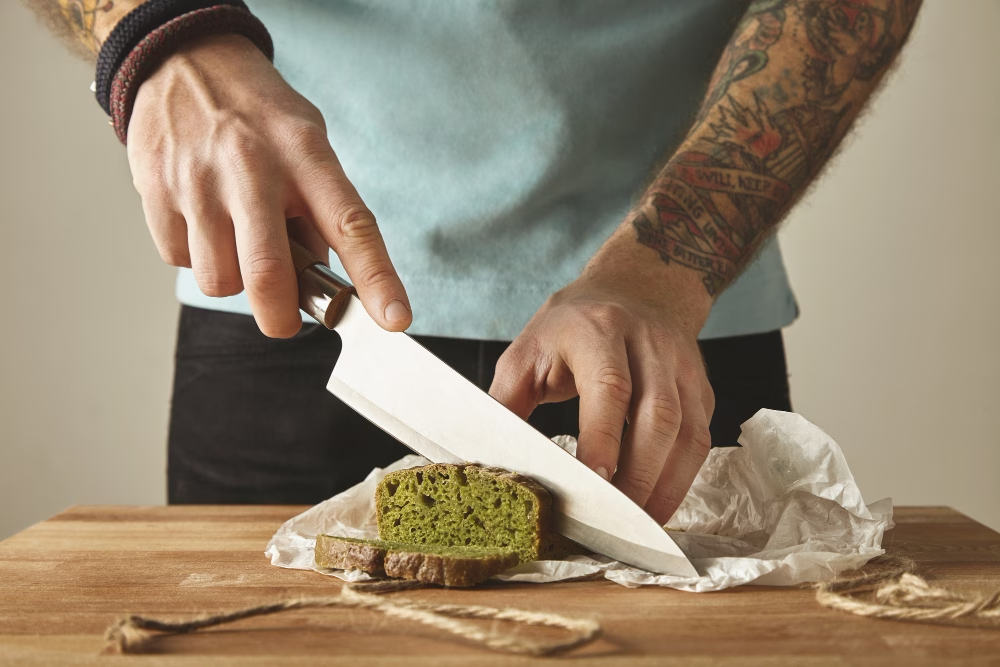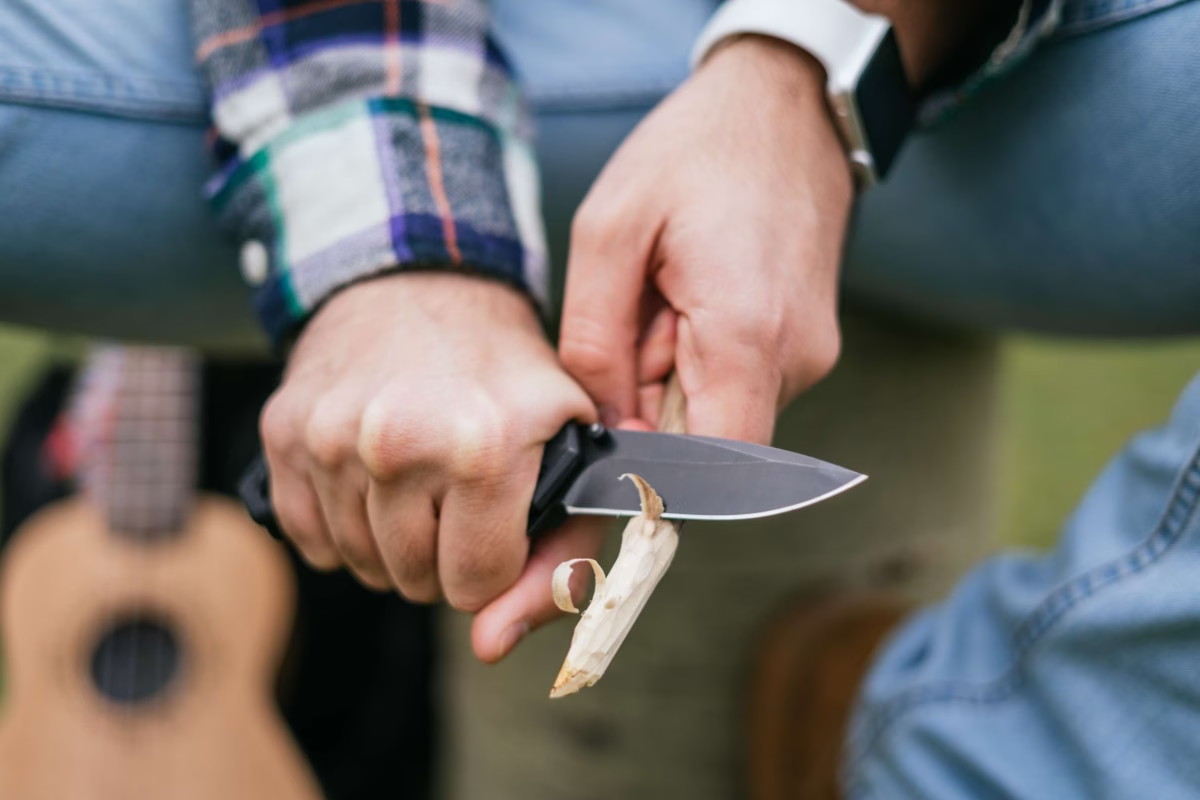How to Hold a Knife: The Ultimate Guide to Knife Grip and Safety

Holding a knife the right way is more than just a safety measure — it’s the key to mastering your kitchen skills. Whether you’re chopping, slicing, or dicing, the way you grip your knife plays a significant role in how efficiently and safely you work. In this article, we’ll break down the essential techniques for holding a knife and explain how to improve your knife skills.
Table of Contents
Why Does Knife Grip Matter?
The way you hold your knife directly impacts your ability to cut safely and with precision. A proper knife grip ensures that you maintain control over the blade, preventing accidents while giving you the power you need for clean, accurate cuts.
Safety Concerns
Using a knife the wrong way can lead to accidents, from slips that cause injuries to inefficient cutting that can make your tasks more difficult. The wrong grip can cause the knife to wobble or make improper contact with the food, increasing the risk of injury.
Precision and Control
A firm but comfortable grip allows for greater control over the knife, which translates to more precise and even cuts. This is especially important when you’re working with small or delicate ingredients, where precision is key.
Types of Knife Grips
There are several ways to hold a knife, each suited for different tasks. Let’s explore the three most common types:
The Pinch Grip
The pinch grip is considered the most professional and versatile grip. To do it, pinch the blade of the knife between your thumb and the side of your index finger, just above the handle. Your other three fingers should grip the handle firmly. This grip gives you excellent control and balance, making it ideal for most cutting tasks.

The Claw Grip
The claw grip is typically used for cutting ingredients. Curl your fingers inward so they resemble a claw, with your knuckles pointing forward. This grip keeps your fingers away from the blade and allows you to guide the knife with precision. It’s commonly used in conjunction with a pinch grip for better control.

The Handle Grip
The handle grip is the most basic grip, where you hold the knife by the handle, similar to how you’d hold a pen. While this grip is less precise than the pinch grip, it can be useful for tasks that don’t require detailed precision, such as chopping vegetables in bulk.

Step-by-Step Guide on Holding a Knife
Preparing for Safe Knife Use
Before you even pick up the knife, make sure you’re working on a stable surface. Use a proper cutting board, and always ensure your knife is sharp. A dull knife is far more dangerous than a sharp one, as it requires more force and can slip more easily.
Correct Finger Placement for Grip
For the pinch grip, start by placing your thumb and index finger on the blade just above the handle. Your thumb should rest on one side while your index finger wraps around the opposite side. Your remaining three fingers should wrap around the handle, providing a secure base for the knife.
How to Hold the Knife Handle
When holding the knife by the handle, your grip should be firm but relaxed. Avoid holding the knife too tightly, as this can lead to fatigue and loss of control. Instead, keep your grip natural and let the knife do the work.
Avoiding Common Mistakes
Common mistakes include holding the knife with too much tension in your hand or placing your fingers too close to the blade. Both can compromise your control and increase the risk of accidents. Additionally, ensure your grip doesn’t interfere with the blade’s full range of motion.
The Mincing Technique: Step-by-Step
Mincing is a knife skill that involves finely chopping ingredients into small, uniform pieces. This technique is fundamental when you want to incorporate flavours more evenly, like when adding garlic or herbs to a dish.
Understanding the Rocking Motion
One of the core motions used in mincing is the “rocking motion.” To perform this technique:
- Place the tip of the knife on the cutting board and keep it in contact with the surface.
- Lift the handle slightly while keeping the tip steady. The knife should rock back and forth like a seesaw, with the tip staying in one place while the handle moves.
- Apply gentle pressure as you move the knife down through the food in a rocking motion, letting the entire length of the blade do the work.
- Repeat the process until the ingredient is finely minced.
This motion provides control over the knife, allowing you to cut precisely while keeping the blade in complete contact with the food.
Proper Knife Hold for Mincing
For efficient mincing, use the pinch grip for control. Your other hand should hold the ingredient in a claw position to keep your fingers safe. This technique ensures a steady grip while allowing your knife to do the work.
How to Mince Efficiently
To mince efficiently, use the entire length of the blade, especially if you’re working with dense ingredients like garlic or ginger. The rocking motion should flow smoothly, and you should maintain a consistent rhythm to get uniform pieces. Don’t be afraid to use multiple passes for mincing.
Detailed Instructions on the Claw Technique
The claw grip is essential for protecting your fingers and improving your cutting efficiency. By using this grip with your non-knife hand, you can ensure that your fingers stay safe while maintaining precision during cuts.
Why the Claw Grip Matters for Safety
When holding an ingredient with the claw grip, your fingers are tucked inward and out of the knife’s path, reducing the risk of injury. The claw grip also helps guide the knife, ensuring a smooth, controlled cut.
Step-by-Step Guide to the Claw Position:
- Curl Your Fingers
- Begin by curling your fingers inward so that your fingertips point toward the centre of your palm. Your knuckles should protrude slightly, acting as a guide for the knife.
- Keep Your Fingernails Facing Down
- As you curl your fingers, make sure your nails are facing the cutting board. This allows your knuckles to act as a guard, creating a barrier between the blade and your fingers.
- Press Your Knuckles Firmly Against the Ingredient
- The knuckles should make gentle contact with the ingredients, providing a solid base for the knife. This helps keep the food steady while you slice or chop.
- Guide the Knife Along the Knuckles
- As you cut, the knife should glide along the knuckles, preventing your fingers from getting in the way. The tip of the knife mustn’t slide under your curled fingers.
- Maintain Tension, But Not Too Much
- While holding the claw grip, keep your fingers taut but not stiff. This tension helps you maintain control of the food while still allowing for smooth cuts.
Additional Tips for Claw Grip Efficiency:
- Stay Relaxed: Don’t grip too tightly — you should feel in control without straining your hand.
- Keep the Knife Blade Close: The blade should be kept near your knuckles but never in contact with them. This ensures you have precise control.
- Use Your Whole Hand: Your thumb should also be involved in the process, helping stabilize the food while your fingers guide the knife.
Practical Tips for Mincing Different Ingredients
Different ingredients require slightly different approaches when it comes to mincing. Here are some tips to help you master the technique for various foods:
Mincing Herbs
For herbs like parsley or basil, use a gentle rocking motion. Be careful not to bruise the leaves too much, as they can lose flavour when over-chopped. To prevent bruising, use a sharp knife and make smooth, light passes.
Mincing Garlic
When mincing garlic, start by smashing the clove with the flat side of the knife to release the skin. Once peeled, use the rocking motion to mince the garlic into fine pieces. Garlic tends to stick to the blade, so periodically wipe it off with a damp cloth to maintain precision.
Mincing Onions
To mince onions, first cut them into quarters and remove the root. Slice horizontally and vertically, then use the rocking motion to chop the pieces finely. Make sure to hold the onion in a claw grip to prevent cutting yourself.
Mincing Other Vegetables
Apply a bit more force to stricter vegetables like carrots or ginger. Slice the vegetables thinly first, then pile the slices and proceed with mincing them using the same rocking motion. For fibrous vegetables like celery, slice against the grain for a finer mince.
Conclusion
In conclusion, holding a knife properly is crucial for both safety and efficiency. By using the correct grip and understanding the purpose behind each one, you’ll be able to handle your knife with greater control and precision. Remember, practice makes perfect, so take your time and refine your technique over time.
FAQs
How do you properly mince garlic?
Start by smashing the garlic clove to remove the skin, then use a sharp knife to chop it finely using the rocking motion.
Why is the rocking motion necessary for mincing?
The rocking motion allows you to cut with control, making it easier to achieve uniform, finely minced ingredients.
Can I use a chef’s knife to mince more minor ingredients?
Yes, a chef’s knife is perfect for mincing, as its sharp blade and length provide the control needed for minor, precise cuts.
How do I prevent my knife from slipping while mincing?
Keep your fingers in a secure claw position and use the knife’s entire blade for maximum control. A sharp knife is also crucial to reduce slipping.
What’s the best way to mince herbs without bruising them?
Use a gentle rocking motion and a sharp knife. Avoid pressing down too hard to prevent bruising the delicate leaves.




